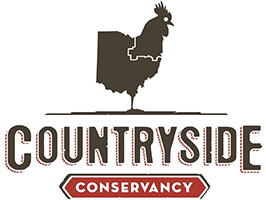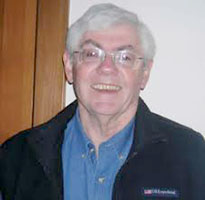
|
Preserving Farmland in Ohio
(Part One)
By: Katie Sobiech
|
The policy produced by the Summit County Food Policy Coalition calls for two measurable action items:
1) eliminate food deserts in Summit County,
2) preserve farmland within Summit County.
We reported on efforts to identify and measure food deserts in our story from January 10th, 2014.
This week we investigate one very successful effort to preserve farm land.
With an abundance of documentaries being released on food in America, it seems an awakening is happening.
Many have begun to realize what an impact urbanization and industrialization have had on agriculture and how that is affecting our everyday lives.
Right here in Ohio we’ve seen a huge shift over the years between local farmers and growers providing our food, versus products being shipped as far as countries away.
It’s alarming to say that the percentage of people working in agriculture, and of food consumed/produced locally is now less than 2%.

Darwin Kelsey, Incorporator and Executive Director of the Cuyahoga Valley Countryside Conservancy (CVCC), hopes to change that; bringing things back into balance.
In doing so, one of the things Kelsey finds important to address is farmland preservation.
The Countryside Conservancy
In 1999, the CVCC formed as a non-profit to help the National Park Service figure out how to rehab and revitalize older farms in the parks.
It has grown to support, educate and encourage local growers, as well as consumers to buy their food locally.
The CVCC connects people, food, and land by increasing public awareness of how food and farming impact personal, community, and environmental health, and by inspiring personal commitment to building a resilient, sustainable food culture (www.cvcountryside.org).

A Tour through History
Can you believe that in 1900 there were about 700-800 farms between Cleveland and Akron; many of them in the Cuyahoga Valley?
Fifty years later half of them were gone.
Twenty-five years later when the park was created, half of those were gone.
Our society as a whole began to drastically change.
In the beginning of the 19th century when the Valley was being settled, 9 out of 10 Americans were engaged in farming for most of their livelihood.
One hundred years later, at the beginning of the 20th century, it’s 4 out of 10.
Fifty years later, in 1950, it’s 1 in 10.
Now it’s less than 1 in 50.

American Gardening
One of the closest things to farming that many people engage in is garden.
The American Gardening Association’s stats show that around 1 in 2 American’s garden. But that includes everything, even flowers.
“For me gardening is about eating things. If you can’t eat it I don’t grow it,” Kelsey said.
But he does see a ray of hope.
“I’m thinking to myself, if 1 in 2 people garden, maybe getting people gardening food and veggies isn’t an impossible dream? Maybe it’s not as big a stretch to get people out there, engaged and to think about what they’re already doing,” he shared.
“We’re just a catalyst” he said of the CVCC.
History of Parks
Kelsey, his office piled high with books on food and farming, has much knowledge and experience when it comes to this topic.
He explains the importance of looking at the National Park Service, who they are and where they came from.
Urban parks in particular are not something often done.
“People were coming into the Valley from Cleveland and Akron from the 1870’s on – to walk and hike and ride down country roads. Get on the canal,” he explained.
“They wanted to see this world that was disappearing all around them.”
This was when urbanizing and industrializing America was at its peak.
Everything was changing.

Industrialized Culture
The world as they knew it was turning into big, industrialized agriculture, something radically different from what Americans were used to.
Now they were relying on chemical resources.
“Farms are going big, they’re going mono-culture and being efficient in a lot of ways, and food is coming from a long ways away because it can be produced and shipped cheaply,” Kelsey explained.
“Food is flooding into the area and most Americans like to pay very little for their food, and when it comes in that way you can do that,” he continued.
Cheap, abundant and convenient are the words Kelsey uses to describe the criteria most Americans are looking for when it comes to their food these days.
But with that, comes a cost…
Watch for next week’s story to find out what the original intent of parks was, and to learn about Kelsey’s discoveries, his plan and journey of re-creating and bringing back to life the “dead bones” of 13 different farms in the National Park area.
For more information on how you can be a part of this please visit: www.cvcountryside.org. You may also like to visit farmer and author Wendell Berry’s website at www.wendellberrybooks.com
If you have any story ideas, questions, or comments you can contact: Katie@akroneur.com.